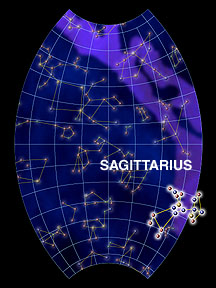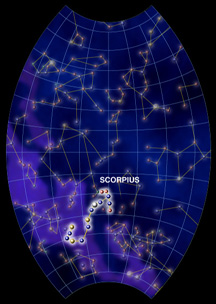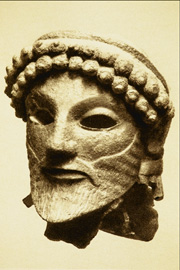The Constellation Sagittarius, the Archer
Click on image for full size
Click on image for full size
Related links:
Sagittarius
Sagittarius is a make-believe creature with the chest and head of a man and the body and legs of a horse. He is shooting his bow at the Scorpion, just next door. Sagittarius is big, but his stars are not very bright. The brightest stars make the shape of a teapot, with a lid, handle, and spout.
Sagittarius was a good friend of the Muses, the goddesses of the arts.
The Muses loved their friend very much and asked Zeus to place a picture
of him in the sky, so that everyone could admire him.










